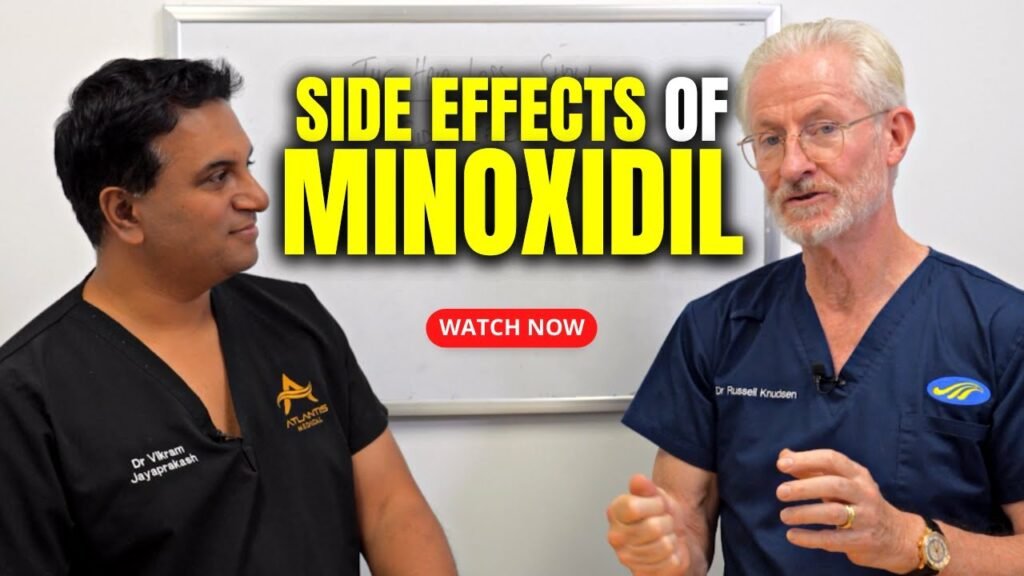Understanding Minoxidil: What is It?
Minoxidil is a topical medication widely recognized for its effectiveness in promoting hair growth and treating hair loss. Originally developed as an oral medication for high blood pressure, it was discovered that one of the side effects of Minoxidil was excessive hair growth. This led to its development as a topical solution specifically aimed at combating hair thinning and balding, particularly in cases of androgenetic alopecia, which is the most common form of hair loss in both men and women.
How Does Minoxidil Work?
The exact mechanism of how Minoxidil works is not fully understood, but it is believed to function by widening the blood vessels and opening potassium channels. This process enhances blood flow to the hair follicles, providing them with more nutrients and oxygen, which can stimulate the hair follicles and promote hair growth. The treatment is typically applied directly to the scalp, where it works to prolong the anagen phase, the active growth phase of hair follicles, thereby reducing hair loss and encouraging regrowth.
Forms and Usage of Minoxidil
Minoxidil is available in various forms, including liquid solutions, foams, and sprays, with concentrations typically ranging from 2% to 5%. The choice of form and concentration can depend on the severity of hair loss and individual skin sensitivity. For optimal results, it is usually recommended to apply Minoxidil twice daily to the affected areas of the scalp. Consistent use is crucial, as discontinuation can lead to the resumption of hair loss. Users may start to notice visible results after several months of continuous application, but individual experiences can vary significantly.
Common Side Effects of Minoxidil
Minoxidil, a popular treatment for hair loss, is widely used by individuals seeking to stimulate hair growth. While it is generally considered safe, users may experience some common side effects. These side effects are usually mild and tend to diminish as the body adjusts to the medication. However, being aware of these potential reactions is crucial for anyone considering or currently using minoxidil.
One of the most frequently reported side effects of minoxidil is scalp irritation. Users may experience itching, redness, or dryness in the areas where the solution is applied. This can often be managed by reducing the frequency of application or by using a moisturizer to soothe the affected area. Its important to avoid applying the product to broken or irritated skin to minimize these effects.
Another side effect that some users encounter is unwanted facial hair growth. This can occur if the solution inadvertently comes into contact with areas other than the scalp. To mitigate this risk, its advisable to wash hands thoroughly after application and to ensure the solution is applied only to the target area. In some cases, users may also notice changes in hair texture or color, although these effects are less common.
In rare instances, individuals using minoxidil may experience more systemic effects such as dizziness, rapid heartbeat, or swelling of the hands and feet. These symptoms should be taken seriously and warrant immediate medical attention. While these reactions are uncommon, they underscore the importance of following the recommended dosage and consulting with a healthcare professional if any unusual symptoms arise.
Exploring the Causes of Minoxidil-Induced Headaches
Minoxidil is a popular topical treatment known for its efficacy in promoting hair growth. However, some users report experiencing headaches as a side effect. Understanding the potential causes of minoxidil-induced headaches can help users make informed decisions about its usage. One primary factor could be the vasodilatory effects of minoxidil. Originally developed as an oral medication for high blood pressure, minoxidil functions by widening blood vessels, which can inadvertently affect blood flow dynamics in the brain, potentially leading to headaches.
Another possible cause of headaches when using minoxidil is the sensitivity to alcohol present in the formulation. Many topical minoxidil solutions contain alcohol as a solvent, which can cause irritation to the scalp. This irritation may lead to tension headaches, particularly in individuals with sensitive skin or those prone to scalp conditions. Ensuring proper application techniques and considering alternative formulations, such as minoxidil foam, which typically contains less alcohol, might mitigate this issue.
Additionally, allergic reactions or sensitivities to minoxidil or its inactive ingredients can trigger headaches. Symptoms of an allergic reaction can include redness, itching, and inflammation of the scalp, which might be accompanied by headache. Conducting a patch test before full application can help identify potential allergies. If a headache persists, consulting with a healthcare provider to explore alternative hair loss treatments or adjusting the dosage might be necessary to alleviate this side effect.
Effective Strategies to Manage Headaches from Minoxidil
If youre experiencing headaches as a side effect of using Minoxidil, there are several effective strategies to manage this discomfort. Staying well-hydrated is crucial, as dehydration can exacerbate headaches. Ensure you drink plenty of water throughout the day to help your body cope with the medications effects. Additionally, maintaining a balanced diet rich in fruits, vegetables, and whole grains can support overall health and potentially reduce headache frequency and intensity.
Adjusting Dosage and Application
Another approach is to review your Minoxidil dosage and application routine. Sometimes, using too much product or applying it too frequently can lead to increased side effects, including headaches. Consult with a healthcare provider to determine if adjusting the dosage or frequency might alleviate your symptoms. Its also important to ensure that youre applying the product correctly, as improper application can lead to excess absorption, potentially contributing to headaches.
Incorporating stress-reduction techniques can also be beneficial. Practices such as yoga, meditation, and deep-breathing exercises can help manage stress levels, which might otherwise worsen headache symptoms. Regular physical activity, even in the form of light exercises like walking or stretching, can promote better circulation and reduce tension, further helping to alleviate headache discomfort.
When to Consult a Healthcare Professional for Minoxidil Headaches
Experiencing headaches after starting minoxidil treatment can be concerning. While mild headaches might be a temporary side effect as your body adjusts, there are certain instances when consulting a healthcare professional becomes crucial. If headaches persist beyond a few weeks or intensify in severity, it is important to seek medical advice. Prolonged or worsening headaches could indicate an adverse reaction to minoxidil, necessitating a professional evaluation to determine whether discontinuation or an alternative treatment is advisable.
Recognizing Severe Symptoms
If headaches are accompanied by other severe symptoms such as dizziness, vision changes, chest pain, or swelling in the extremities, it is imperative to consult a healthcare professional immediately. These symptoms may suggest a more serious side effect of minoxidil that requires prompt medical intervention. In such cases, a healthcare provider can conduct necessary assessments to rule out complications and ensure your safety.
Monitoring Underlying Health Conditions
Individuals with pre-existing health conditions, such as cardiovascular issues or chronic migraines, should be particularly vigilant. If minoxidil headaches exacerbate these conditions or interfere with their management, consulting a healthcare professional is essential. A tailored approach, possibly involving dosage adjustments or alternative therapies, can be discussed to mitigate risks while addressing hair loss effectively.


